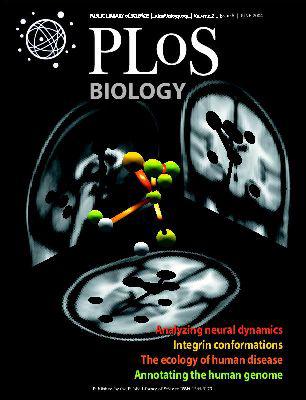Alveolin proteins in the Toxoplasma inner membrane complex form a highly interconnected structure that maintains parasite shape and replication
IF 7.2
1区 生物学
Q1 BIOCHEMISTRY & MOLECULAR BIOLOGY
引用次数: 0
Abstract
Apicomplexan parasites possess several specialized structures to invade their host cells and replicate successfully. One of these is the inner membrane complex (IMC), a peripheral membrane-cytoskeletal system underneath the plasma membrane. It is composed of a series of flattened, membrane-bound vesicles and a cytoskeletal subpellicular network (SPN) comprised of intermediate filament-like proteins called alveolins. While the alveolin proteins are conserved throughout the Apicomplexa and the broader Alveolata, their precise functions and interactions remain poorly understood. Here, we describe the function of one of these alveolin proteins in弓形虫内膜复合体中的 Alveolin 蛋白形成了一个高度相互关联的结构,可维持寄生虫的形状和复制
表皮复合寄生虫拥有几种专门的结构,可以入侵宿主细胞并成功复制。其中之一是内膜复合体(IMC),它是质膜下的外周膜-细胞骨架系统。它由一系列扁平的膜结合囊泡和细胞骨架亚球状网络(SPN)组成,后者由称为肺泡蛋白的中间丝状蛋白构成。虽然肺泡蛋白在整个甲壳纲和更广泛的肺泡纲中都是保守的,但它们的确切功能和相互作用仍然鲜为人知。在这里,我们描述了弓形虫中的一种肺泡蛋白 IMC6 的功能。中断 IMC6 会导致惊人的形态缺陷,导致异常入侵和复制,但令人惊讶的是对运动性的影响很小。缺失分析表明,仅肺泡蛋白结构域就足以恢复定位,并部分恢复功能。由于这凸显了 IMC6 alveolin 结构域的重要性,我们对 alveolin 结构域进行了非天然氨基酸光活性交联,并确定了 IMC6 与其他两种细胞骨架 IMC 蛋白--IMC3 和 ILP1 之间的多个结合界面。这直接证明了蛋白与蛋白之间在alveolin结构域的相互作用,并支持了alveolin结构域负责细丝形成这一长期存在的假说。总之,我们的研究表明,保守的alveolin蛋白是维持寄生虫结构完整性的关键成分,并强调了alveolin结构域是SPN结构的关键介质。
本文章由计算机程序翻译,如有差异,请以英文原文为准。
求助全文
约1分钟内获得全文
求助全文
来源期刊

PLoS Biology
生物-生化与分子生物学
CiteScore
14.40
自引率
2.00%
发文量
359
审稿时长
3 months
期刊介绍:
PLOS Biology is an open-access, peer-reviewed general biology journal published by PLOS, a nonprofit organization of scientists and physicians dedicated to making the world's scientific and medical literature freely accessible. The journal publishes new articles online weekly, with issues compiled and published monthly.
ISSN Numbers:
eISSN: 1545-7885
ISSN: 1544-9173
 求助内容:
求助内容: 应助结果提醒方式:
应助结果提醒方式:


